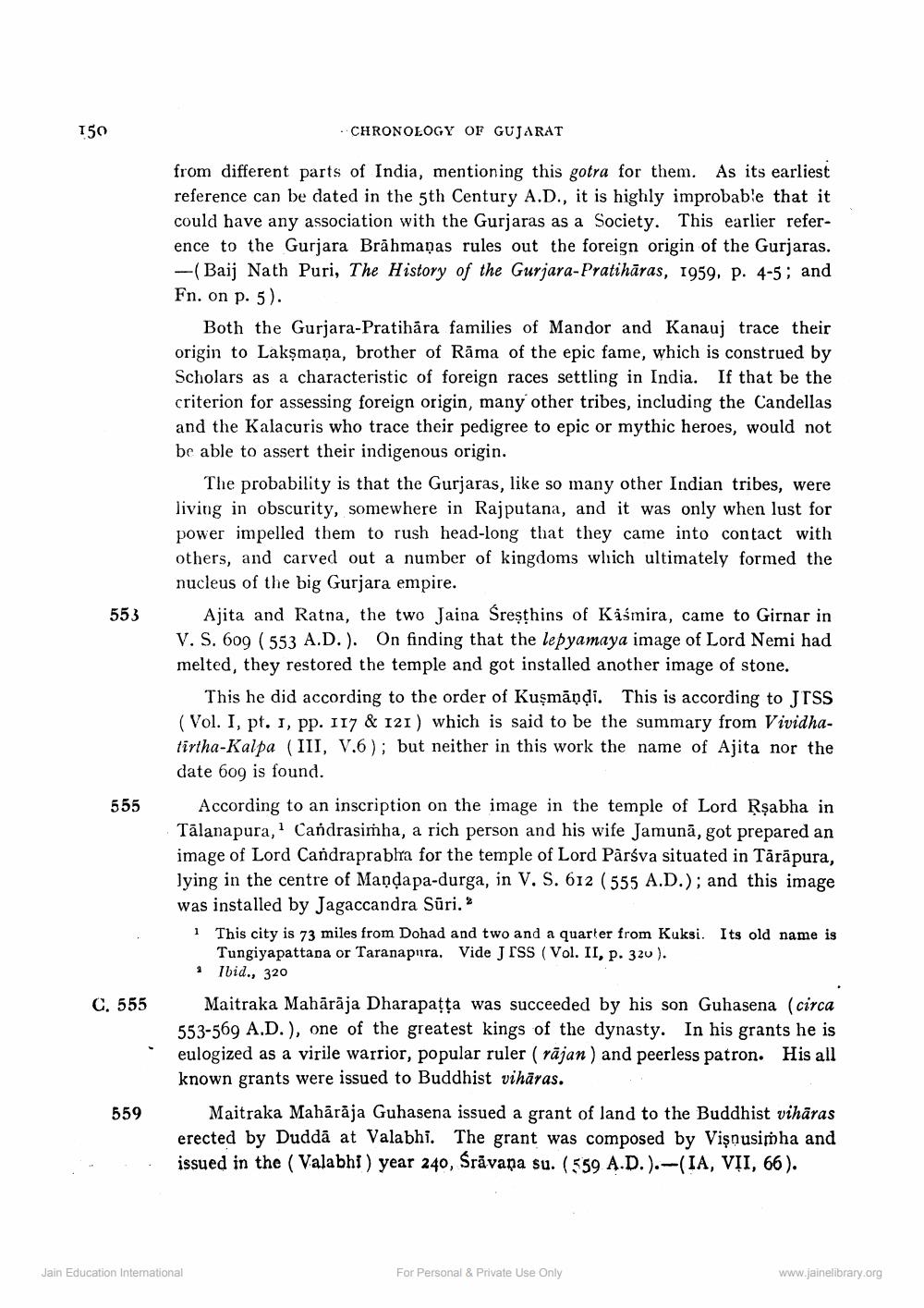________________
150
CHRONOLOGY OF GUJARAT
553
from different parts of India, mentioning this gotra for them. As its earliest reference can be dated in the 5th Century A.D., it is highly improbable that it could have any association with the Gurjaras as a Society. This earlier reference to the Gurjara Brāhmaṇas rules out the foreign origin of the Gurjaras. --(Baij Nath Puri, The History of the Gurjara-Pratihāras, 1959, p. 4-5; and Fn. on p. 5).
Both the Gurjara-Pratihāra families of Mandor and Kanauj trace their origin to Lakşmaņa, brother of Rāma of the epic fame, which is construed by Scholars as a characteristic of foreign races settling in India. If that be the criterion for assessing foreign origin, many other tribes, including the Candellas and the Kalacuris who trace their pedigree to epic or mythic heroes, would not be able to assert their indigenous origin.
The probability is that the Gurjaras, like so many other Indian tribes, were living in obscurity, somewhere in Rajputana, and it was only when lust for power impelled them to rush head-long that they came into contact with others, and carved out a number of kingdoms which ultimately formed the nucleus of the big Gurjara empire.
Ajita and Ratna, the two Jaina Śreșthins of Kiśmira, came to Girnar in V. S. 609 ( 553 A.D.). On finding that the lepyamaya image of Lord Nemi had melted, they restored the temple and got installed another image of stone.
This he did according to the order of Kuşmāņdi. This is according to JTSS (Vol. I, pt. 1, pp. 117 & 121) which is said to be the summary from Vividhatirtha-Kalpa (III, V.6); but neither in this work the name of Ajita nor the date 60g is found.
According to an inscription on the image in the temple of Lord Rşabha in Tālanapura, Candrasimha, a rich person and his wife Jamunā, got prepared an image of Lord Candraprabhra for the temple of Lord Parsva situated in Trāpura, lying in the centre of Mandapa-durga, in V. S. 612 ( 555 A.D.); and this image was installed by Jagaccandra Sūri." 1 This city is 73 miles from Dohad and two and a quarter from Kuksi. Its old name is
Tungiyapattana or Taranapura. Vide JESS (Vol. II, p. 320). · Ibid., 320
Maitraka Mahārāja Dharapațţa was succeeded by his son Guhasena (circa 553-569 A.D.), one of the greatest kings of the dynasty. In his grants he is eulogized as a virile warrior, popular ruler ( rājan) and peerless patron. His all known grants were issued to Buddhist vihāras.
Maitraka Mahārāja Guhasena issued a grant of land to the Buddhist vihāras erected by Duddā at Valabhi. The grant was composed by Vişnusisha and issued in the (Valabhi ) year 240, Srāvana su. (559 A.D.).-(IA, VII, 66).
555
C. 555
559
Jain Education Intemational
For Personal & Private Use Only
www.jainelibrary.org




